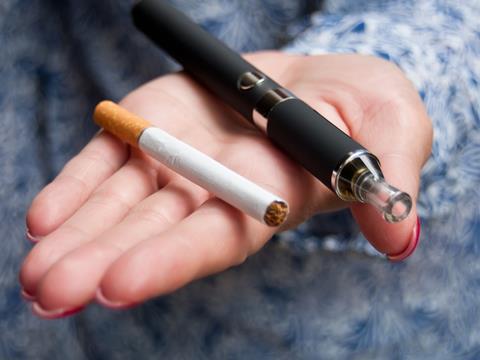
With Sweden on the brink of smoke-free status, the UK government is taking a fresh look at what measures could be introduced to accelerate the journey towards a smoke-free 2030.
The ambition is commendable. However, going smoke-free is only viable if we dispel the misconceptions that inhibit consumers who would like to transition from cigarettes to smoke-free alternatives, while ensuring we have a coherent, science-based regulatory framework that is enforced by the authorities.
Sustained and lasting changes to consumer behaviour are difficult. Given that consumer choice is one of the greatest hopes for making the cigarette redundant, it is clear to us that vapour products can and should be part of any government’s smoke-free plans.
Across the world, there are examples of where tobacco harm reduction is bringing real change. When we talk of smoke-free targets, the generally accepted metric for this is cigarette prevalence below 5%. According to the Centers for Disease Control and Prevention, for those aged 18 to 24, smoke-free has now been achieved in the US.
This also dispels the myth that vaping acts as a gateway to cigarettes. Were that true, you would expect smoking prevalence to be increasing in 18 to 24-year-olds. Rather, the opposite is the case.
As for the proposed UK generational smoking ban, our view is that prohibiting the sale of cigarettes to people born after a fixed date, even when they become adults in the eyes of the law, will create a class of ‘underage adult’ and is likely to distort the market and increase illicit trade.
What we need is smarter regulation to ensure the right balance is struck between harm reduction and creating unintended consequences, particularly when it comes to underage access or the environment.
On-device technology, when applied to the entire market, could help ensure vapour products are accessible only to adults. Further, appropriate means of ensuring safe and proper disposal of batteries is needed.
Recognising the role of flavours as an important driver of adoption for smokers seeking alternatives, while ensuring the removal of vapour product flavours that appeal to anyone underage, would provide a balanced approach to meeting consumer demand while reducing youth use.
Sensible safeguards at the manufacturing and import level, as well as at the point of sale, could help ensure non-compliant products cannot reach the market in the first place.
Finally, and perhaps most importantly, governments should wield their enforcement powers – many of which already exist – to build the credibility of tobacco harm reduction, ensure only adult consumers are buying compliant products, and suitably penalise those who fail to comply.
We have an opportunity to redefine the future of public health, and it begins with smarter regulation that provides smokers with the freedom to choose less risky alternatives to cigarettes.



















No comments yet